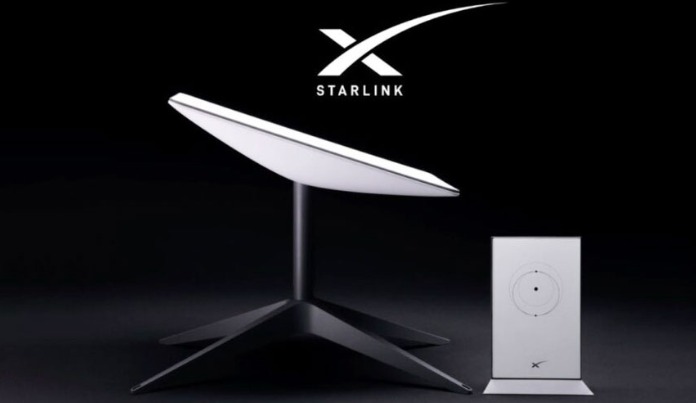Technology Desk:
Starlink arrives in the country Satellite internet service Starlink has officially launched in Bangladesh. Elon Musk’s company launched Starlink in the country with two packages. One costs more. The other is less. Customers in Bangladesh can order Starlink packages from Tuesday.
The one-time cost for Starlink’s setup equipment will be 47,000 taka. The two packages are Starlink Residence and Residence Lite. The monthly cost is 6,000 taka for one, and 4,200 taka for the other.
Faiz Ahmed Tayyab, Special Assistant to the Principal Advisor on Posts, Telecommunications and Information Technology, said on his Facebook page that there is no speed and data limit on Starlink. Unlimited data with a maximum speed of 300 Mbps can be used. Customers in Bangladesh can order from today.
Starlink arrives in the country
The number of devices that can be connected through a connection will depend on the model and configuration of the router. Typically, Starlink’s standard routers (Gen 2 and Gen 3) support up to 128 devices simultaneously. Gen 3 routers can support up to 235 devices, although Starlink has not officially stated this.
Starlink Router Capacities
According to Starlink’s documentation and app, Gen 2 and Gen 3 routers officially support 128 devices simultaneously. However, some unofficial claims suggest that Gen 3 routers can support up to 235 devices. It is possible to support up to 8,000 devices using specialized networking solutions. However, this requires additional hardware. And it is not for general use.
Although the router supports 128-235 devices, the network performance may decrease as the number of connected devices increases. This is because the bandwidth is shared among all. For optimal performance, it is recommended to use fewer devices than the maximum capacity. Connections can be slow when running high-bandwidth activities (such as streaming, gaming) on multiple devices, especially during peak hours (6 PM-11 PM).
Starlink arrives in the country
Third-party routers
You can bypass the Starlink router and use a third-party router or mesh system to increase the number of devices. This allows for advanced features such as load balancing, better coverage, and support for more devices.
How to connect devices to Starlink
To connect devices, follow these steps:
1. Starlink kit setup
The Starlink kit includes a dish (user terminal), a router, a power cable, and a 75-foot cable to connect the dish to the router. Ensure that the dish is placed in a clear line of sight to the sky (no obstructions above 20° elevation).
Turn on the router and dish and wait for the green light on the router. A solid green light indicates an internet connection.
Download the Starlink app to manage setup and monitor your network (for iOS and Android).
2. Connect via Wi-Fi
The Starlink router supports dual-band Wi-Fi (2.4 GHz and 5 GHz). The 2.4 GHz band offers longer range but slower speeds, while the 5 GHz band offers faster speeds but shorter range.
Go to the Starlink app and find the Wi-Fi network name (SSID) and password.
Go to the Wi-Fi settings on your device (phone, laptop, etc.), select the Starlink network and enter the password.
For best performance, separate the 2.4 GHz and 5 GHz bands, as some devices only work on 2.4 GHz.
Place the router in an open area, where there are no obstacles.
3. Connect via Ethernet (cable)
Gen 2 router (Wi-Fi 5, rectangular dish): It doesn’t have a built-in Ethernet port, so you’ll need a Starlink Ethernet adapter ($25) to connect wired devices.
Gen 3 router (Wi-Fi 6): It has two Ethernet ports, which allow for direct wired connections.
For multiple wired devices, connect a network switch to the Ethernet port or adapter.
4. Use a third-party router or mesh system
To bypass the Starlink router, go to the Starlink app (Settings > Bypass Mode) and enable bypass mode.
Connect the third-party router to the Starlink dish via an Ethernet adapter (for Gen 2) or directly via the Ethernet port (for Gen 3).
Configure the third-party router in Access Point (AP) mode or Bridge mode.
5. Performance Optimization
Router Placement: For maximum coverage, place the router in a central location, high up, and away from walls or other electronics.
Reduce Interference: Keep the router away from other electronics (e.g. microwaves, baby monitors).
Firmware Update: Check for router updates in the Starlink app for optimal performance.
Limit High-Bandwidth Devices: Disconnect unnecessary devices during peak hours.
Reboot the Network: If you are having connectivity issues, turn off the router and dish for 5-10 minutes and then turn them back on.
6. Troubleshooting Specific Devices
Apple Devices: Some users have reported frequent disconnections with Apple devices. Disabling the 5 GHz band or turning off features like Private Wi-Fi Addresses and Private Relay may resolve the issue.
Roku streaming device: Make sure the router is set to B/G/N mode for 2.4 GHz.
Note that Starlink routers provide coverage for approximately 2,000 to 3,200 square feet indoors. For businesses or larger networks, Starlink’s Enterprise plan or third-party packages can be used.
However, performance may be affected by interference, adverse weather conditions (such as heavy rain), or high device usage during peak hours.




